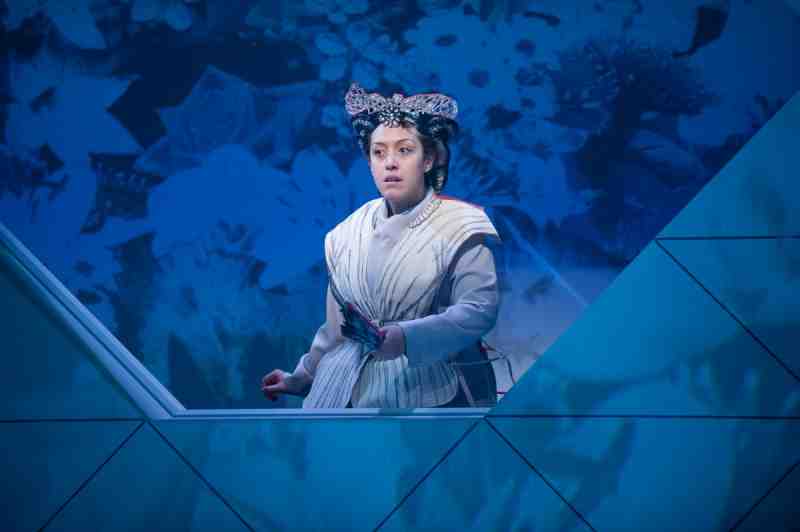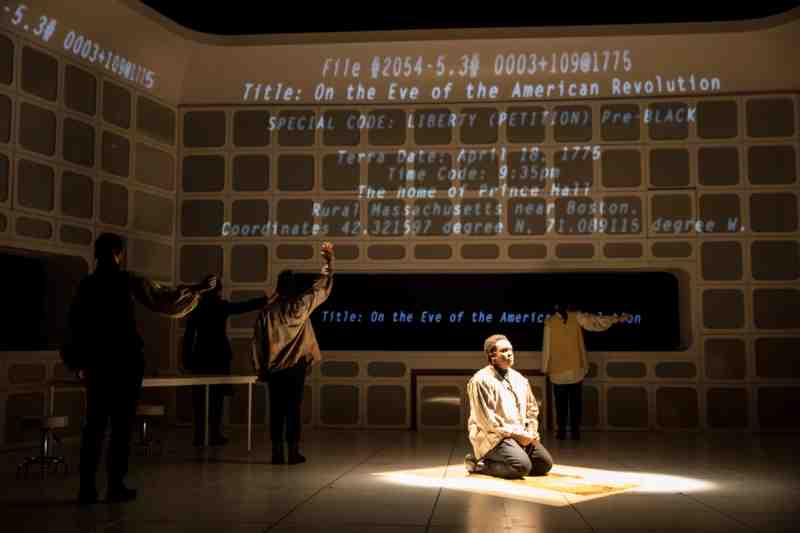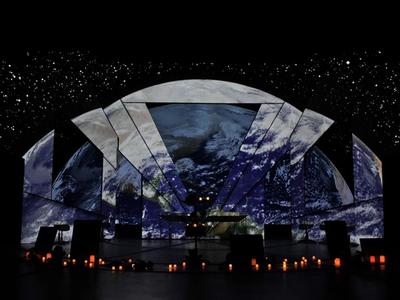
Collidescope
ORIGIN
In 2013, the murder of Trayvon Martin led directly to Ping Chong's decision to create a work addressing the issue of violence against African Americans. Ping invited long time collaborator, Talvin Wilks, to join him on this epic endeavor. Originally the work was centered on Trayvon Martin, but while researching the project Ping came across a speech James Baldwin gave in London which is featured in Raoul Peck's acclaimed film, I Am Not Your Negro. Its riveting content directly inspired an expansion and examination of white supremacy in American history over time; a time machine providing a bird's eye view of racial hatred in America. The result is Collidescope.

Collidescope: Adventures in Pre and Post-Racial America was created by Ping Chong and Talvin Wilks in partnership with the University of Maryland in 2014 during the growth of Black Lives Matter organizing in response to targeted violence against Black people in America. Since the original production in 2014 at the University of Maryland, there have been three more Collidescope productions in partnership with Wake Forest University, UMass Amherst, and University of Minnesota, all created in residence and performed on these campuses. Collidescope productions are woven anthologies of personal, local, and national accounts of racism, colonialism, and engagement with institutional and geographic histories of race in America.

DEVELOPMENT
Collidescope productions are designed to provide a hauntingly “objective” lens to history as a way of inviting audience members into conversations about race in America. The objective lens, in Collidescope’s premise, is that of an alien race’s perspective as they make first contact with Earth by first studying the murder of Trayvon Martin in the opening scene. These histories are “simulated” and “observed” on the stage by the alien race, providing the audience a jarring eye to their perceptions of their own internalized knowledge of these histories. An example of a convention that the creators use to disrupt perception is the use of onstage “glitching” through actors’ choreography and way of speech to telescope loaded historical evidence. Sourcing both national and local stories of racial division and violence in America, the Collidescope series forces audiences to view their history as a “virulent miscarriage of justice when it comes to the history of African Americans in this country.”
In each new iteration, Talvin and Ping work closely with campus communities, unearthing local stories to then interweave into national headlines and historical pivots. Examples of these pieces of history include a coup d’etat in Wilmington, North Carolina in 1898 targeted at Black residents and businesses, a banquet scene at the eve of the Civil War, and site specific histories written for each of the campuses like the lynching of ten men and one woman in Loudes Counties, Georgia in 1918 in Collidescope 2.0 at the University of Massachusetts. Collidescope uses theater, movement, video projections and a collaged soundscape to bring to life all these stories through a disorienting, harrowing audience experience.

IMPACT
Collidescope's impact is one that has shaped the way institutions and audiences frame and reflect on their relationships with race and the resounding effect history holds today. “We hope,” says Wilks, “that people will come to the performance and be compelled to recognize, consider, and contemplate the impact of this history and the things that we need to address and change today.” A piece that bleeds into all generations, races, genders, and classes, Collidescope is perhaps best described as a call to action, an urgency to archive, mourn, and to be able to tell the story of communities long unheard in America.

As Talvin Wilks states in his interview with professor and dramaturg Priscilla Page at the University of Massachusetts in 2016: “It is important that we keep this piece up to date. We are collecting stories and creating an archive of events since 2014 right up to today. This is very important in terms of the work and our vision of this project. In this way, we are living up to the idea that this is a process and not a play. We are collecting up to the moment, history in the making and we are weaving that into what Collidescope is really meant to be: an understanding of time and history, a blending of now and then.”






